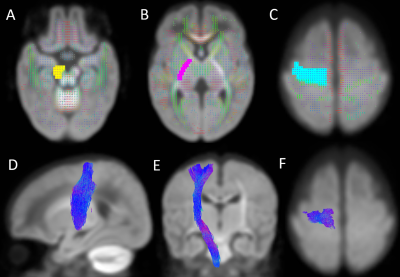Rahul Chandwani1, Julia Kline1, Karen Harpster2,3,4, Jean Tkach5,6,7, and Nehal Parikh1,2
1Perinatal Institute, Cincinnati Children's Hospital Medical Center, Cincinnati, OH, United States, 2Department of Pediatrics, University of Cincinnati College of Medicine, Cincinnati, OH, United States, 3Division of Occupational Therapy and Physical Therapy, Cincinnati Children's Hospital Medical Center, Cincinnati, OH, United States, 4Department of Rehabilitation, Exercise and Nutrition Sciences, University of Cincinnati College of Allied Health Sciences, Cincinnati, OH, United States, 5Department of Radiology, Cincinnati Children's Hospital Medical Center, Cincinnati, OH, United States, 6Imaging Research Center, Department of Radiology, Cincinnati Children's Hospital Medical Center, Cincinnati, OH, United States, 7Department of Radiology, University of Cincinnati College of Medicine, Cincinnati, OH, United States
1Perinatal Institute, Cincinnati Children's Hospital Medical Center, Cincinnati, OH, United States, 2Department of Pediatrics, University of Cincinnati College of Medicine, Cincinnati, OH, United States, 3Division of Occupational Therapy and Physical Therapy, Cincinnati Children's Hospital Medical Center, Cincinnati, OH, United States, 4Department of Rehabilitation, Exercise and Nutrition Sciences, University of Cincinnati College of Allied Health Sciences, Cincinnati, OH, United States, 5Department of Radiology, Cincinnati Children's Hospital Medical Center, Cincinnati, OH, United States, 6Imaging Research Center, Department of Radiology, Cincinnati Children's Hospital Medical Center, Cincinnati, OH, United States, 7Department of Radiology, University of Cincinnati College of Medicine, Cincinnati, OH, United States
Very preterm infants are at high risk of developing motor
impairments such as cerebral palsy. We report macro and microstructural
biomarkers of sensorimotor tract integrity, derived from diffusion MRI at
term-equivalent age, that are associated with the early diagnosis of cerebral
palsy.

Figure 3. Bilaterally segmented sensorimotor tracts. (A) corticospinal tract in coronal view; (B) superior thalamic radiations (motor) in coronal view; (C) superior thalamic radiations (sensory) in coronal view; (D) posterior thalamic radiations in axial view
*All fibers of the STRS are not visible in coronal view, as the tract continues from the thalamus to the post-central gyrus

Figure 2. Location of regions of
interest (ROIs) on the group fixel plot and the segmented right corticospinal
tract. (A) Seed point ROI covering the right cerebral peduncle on an axial
view; (B) Waypoint ROI covering the right posterior limb of the internal
capsule on an axial view; (C) Waypoint ROI covering the right precentral gyrus
on an axial view; (D-F) Right corticospinal tract on sagittal, coronal and
axial views, respectively.
